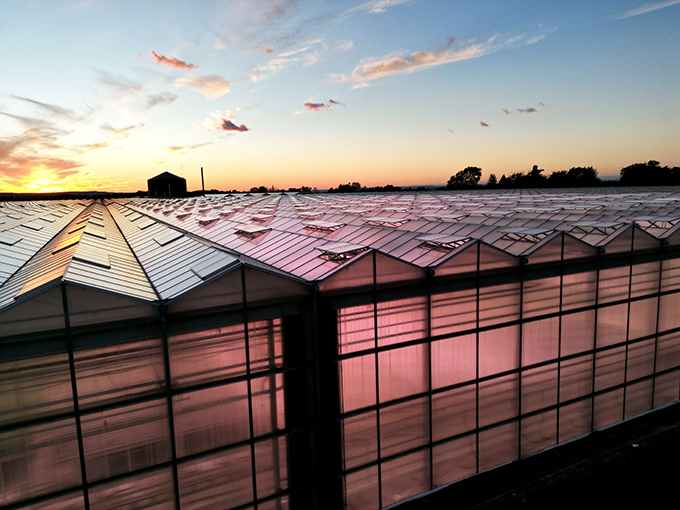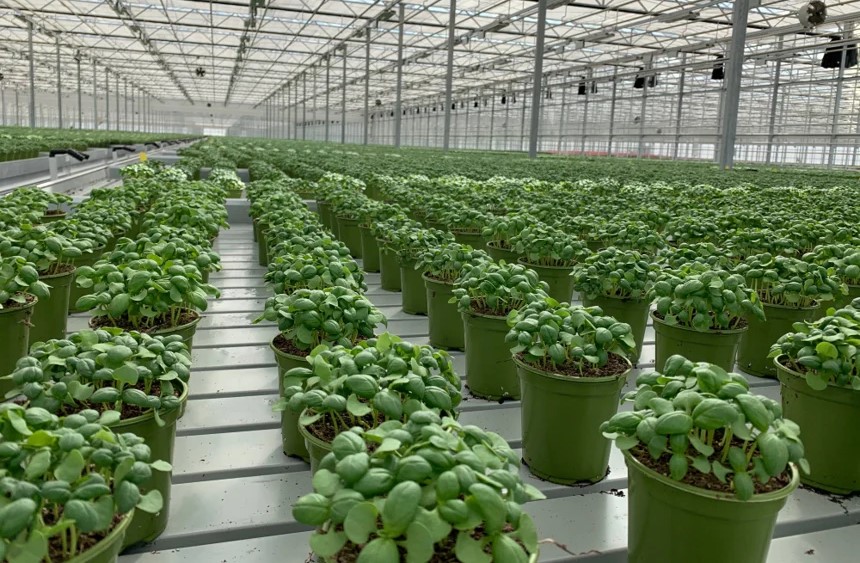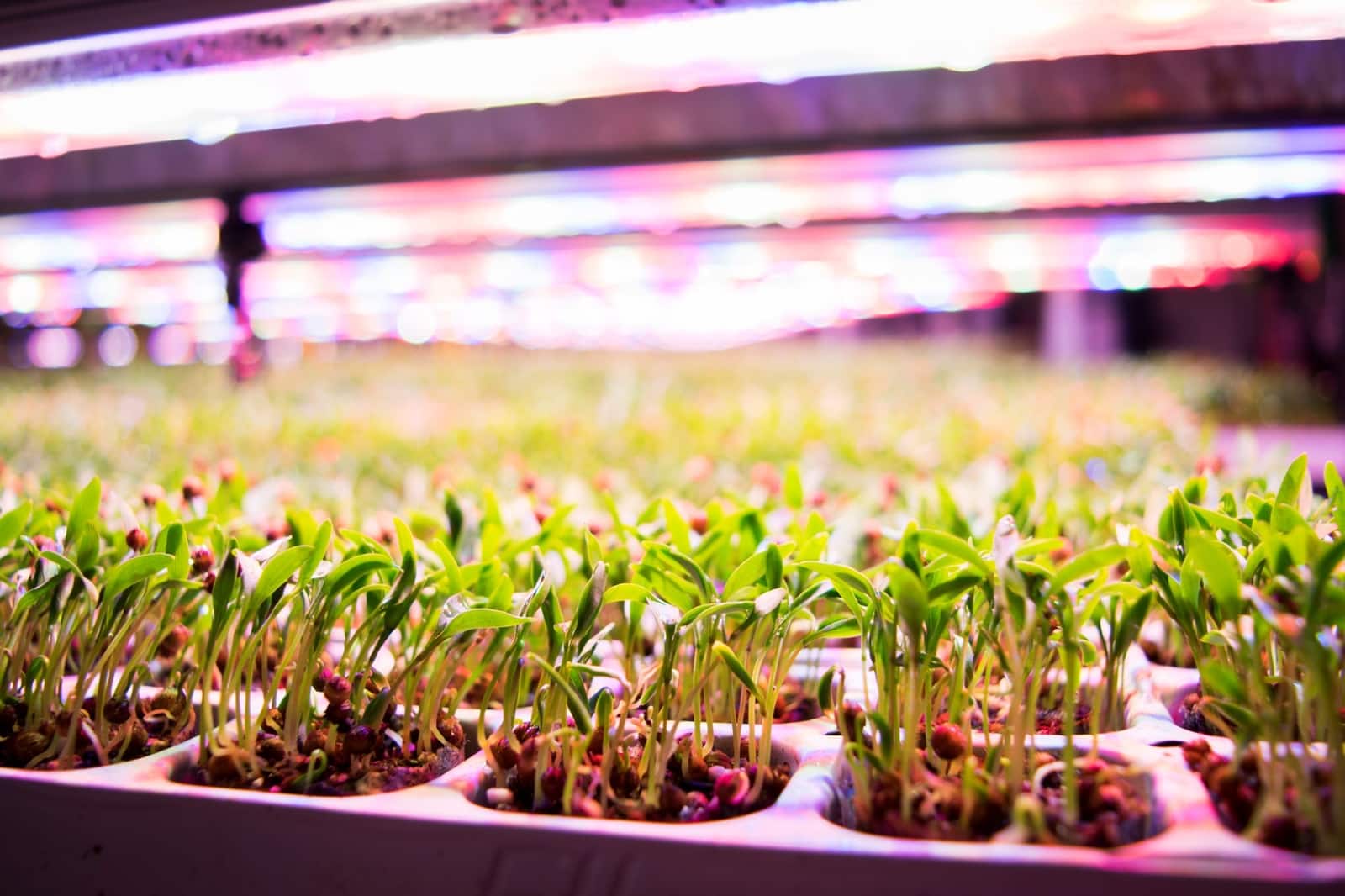Articles
Strawberry Cultivation Challenges: How to Overcome Key Growth, Energy, & Lighting Issues
Strawberry cultivation presents unique challenges and insecurities compared to other crops.
-
An increasing number of chemicals against fungi, botrytis, and other threats have already been banned, or are likely to be prohibited in the coming years.
-
Growers need to reduce their energy consumption, while also managing rising energy costs.
-
Growers will need to choose between growing June bearers or Everbearers, as well as between plants grown from fruits, or daughter plants.
To cope with the first challenge, growers will need to grow their plants stronger. However, this may come at the cost of yield, as they must find the optimal balance between vegetative and generative growth.
For the second challenge, there are various technical solutions available, including LED lighting, second screens, E-boilers and solar panels that still transmit PAR light, etc.
The third challenge presents a difficult choice, that might be too hard to make at this point. Will Everbearing strawberries offer comparable (year-round) yields to June bearers, or will the cost associated with labor and maintaining a stable workforce tip the scale in favour to Everbearers?
Additionally, can breeders develop F1 hybrids that offer more consistency from plant to plant?
Balancing between generative and vegetative growth with LED lighting
Balancing generative and vegetative growth can be managed with various tools, such as CO2, temperature, humidity and light.

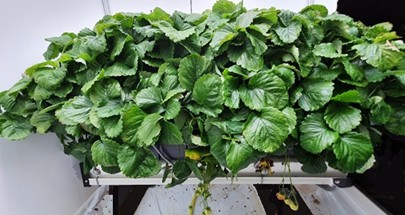
Lighting plays a crucial role, particularly in adjusting the amount and timing of far-red light. The ratios between red and far-red, as well as blue and red, significantly influence plant balance. In the long-day varieties, or Everbearers, the biggest influence is in the number of hours you use your lighting installation. Using more than 12 hours of light induces flowers, while extending lighting to 18 hours leads to excessive flower induction. This can cause the plant to grow out of balance, requiring longer recovery period after fruit production. A well-balanced plant, on the other hand, ensures a higher overall yield.
Growing with up to 3 hours of red-only light beyond 12 hours of full spectrum, combined with 10 minutes of end-of-day far-red, helps to increase light exposure without pushing the plant completely out of balance, resulting in healthier and fresher-looking plants.

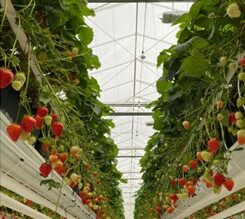
With the continued restriction of pesticides, protecting plants against diseases like Mildew, Pythium, Botrytis and others will increasingly depend on biological control and strong plants. Achieving the right balance in plant growth is essential for maintaining resilience against these threats.
Reducing energy Consumption
One of the most effective ways to save energy is by reducing heat loss through the greenhouse roof. Additionally, replacing HPS lighting with LED lighting significantly lowers energy costs.
While both measures have big advantages, especially in cost reduction, they also pose challenges.
Keeping the screens closed significantly increases humidity levels, which can create challenges for climate management. Installing dehumidification systems can help mitigate this issue, and some of these devices can even recover energy by capturing latent heat from moisture.

Switching from HPS to LED can also present challenges, particularly in regions where the temperatures are very low in the winter. Greenhouses might not have enough heating capacity to compensate for the lack of radiated heat from the HPS lamps. This radiated heat not only warms the environment but also increases leaf temperature, which makes the leaves warmer than the air around them. This has a huge effect on the capacity of the plant to evaporate.
Spectrum control
The ideal light spectrum for strawberries is still being researched, but controlling far-red and red light separately has already proven valuable.
Red light can make the plant think it is in a short day (June bearers), while doing photosynthesis for a long day. Additionally, long-day plants (Everbearers) can receive extended lighting hours better when exposed to red only light for several hours, helping them maintain balance.
Being able to give End-of-Day far-red is interesting for all varieties, as it helps regulate stem elongation and reduce labour costs.
Controlling the ratio between red and far-red, as well as red and blue, is also interesting to managing how vegetative the plant grows.
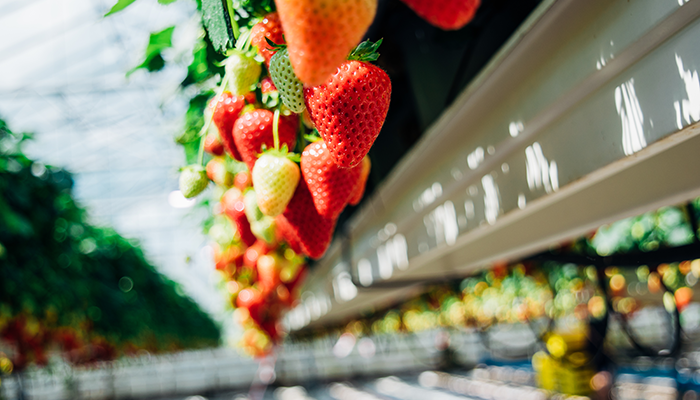
Investments that seem to be a must
Combining the second screen with an LED lighting system typically compensates each other on temperature, the lack of heat is compensated by the reduction of heat loss with a second (energy) screen. However, this does not solve the humidity/evaporation problem, as the combination increases moisture levels inside the greenhouse.
When the moisture problems can be effectively managed through other methods, both energy/cost-reduction strategies are necessary for growers to remain competitive.
Growing June bearers, Day neutral varieties, or Everbearers
Everbearing strawberry varieties such as Favori, or Murano have a smaller first flush, but can maintain the same fruit load throughout the cultivation. This helps with keeping the workload (and staff) constant and allows growers to work mainly with their fixed crew.

June Bearers like Elasanta, Malling Centenary, and Inspire, on the other hand, have a big first flush, with subsequent flushes decreasing in size. It also takes longer between the harvest and new flower induction.

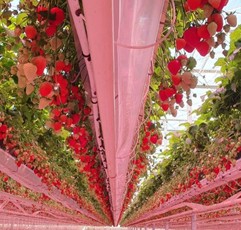
Day-neutral varieties are less commonly chosen for greenhouses with lighting, as their fruits tend to be smaller than those of Everbearers and June bearers.
The benefit of installing dynamic LED lighting with spectrum control is that growers can change between different varieties grown and can easily adapt the spectrum to that varieties needs. Thereby building in flexibility for the grower and safeguarding the investment made during the lifespan of the lights.
How to Make the Right Lighting Decisions for Your Cultivation
We understand that making the right lighting decisions can be overwhelming, especially with so many factors to consider for optimal cultivation. At Heliospectra, we are here to help you navigate these complex decisions. Heliospectra is a company that has been producing multi-channel LED lights for horticulture for more than 15 years and has developed their software platform for wireless control for 10 years!
When thinking about multi-channel horticulture lighting, trust the company with the most experience in this field. Heliospectra, world market leader in horticulture research
Reach out today to start your journey towards more efficient and effective horticulture!
Related content
Get in touch with us!
From custom light planning, to tailored quotes, and everything in between,
our team of horticulture experts are always ready to assist.



